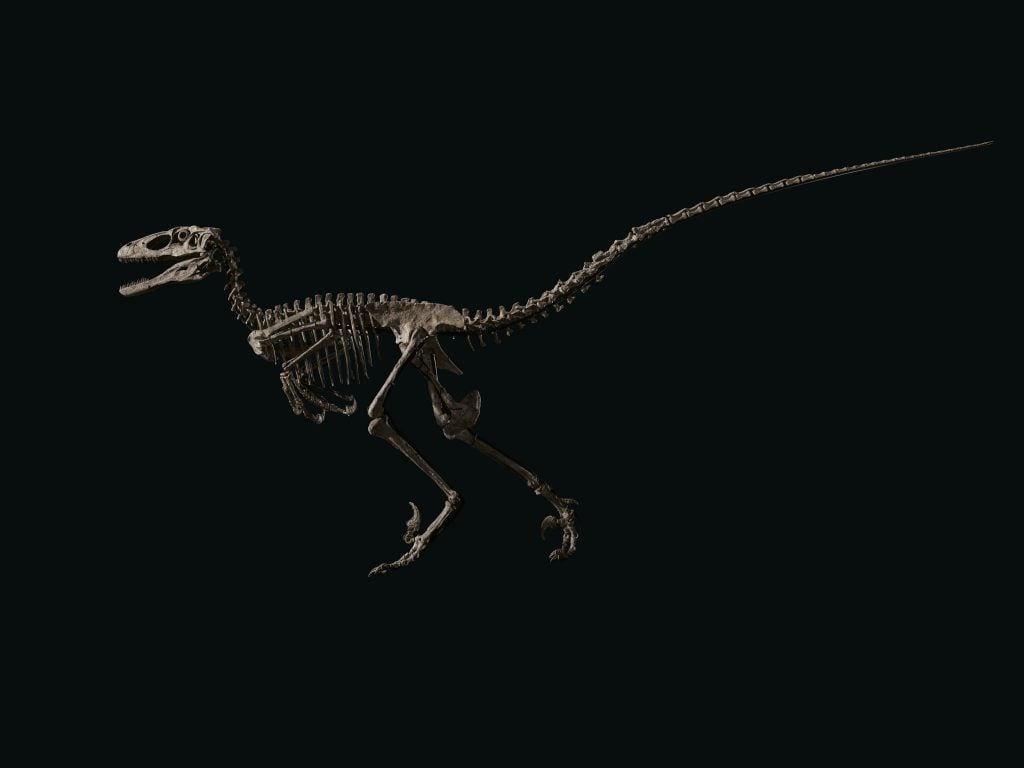Archaeology & History
Christie’s Auctioned Off a Velociraptor Skeleton for $12.4 Million, Eviscerating Its $6 Million Estimate
The specimen is the same type that inspired Juraissic Park's velociraptors.

The specimen is the same type that inspired Juraissic Park's velociraptors.

Caroline Goldstein

In a roaring sale that trampled its presale estimate, Christie’s this week auctioned off a velociraptor skeleton during its star-studded 20th- and 21st-century art auction for $12.4 million.
The last lost of the sale, which went after the Monets and Rothkos found buyers, was a much, much older artifact: an exceedingly well preserved Deinonychus antirrhopus skeleton.
The now-extinct predator—nicknamed Hector after the Trojan warrior—measures nearly ten feet long and is made from 126 fossilized bones dating back approximately 108 to 115 million years. Its presale estimate was $4 million to $6 million.
According to Christie’s, the sale was the first public auction of a deinonychus specimen, a term coined in 1969 that translates to “terrible claw”—the defining characteristic of Hector and his ilk.
The skeleton was unearthed during an excavation in Montana’s Wolf Canyon in 2015 by Jack and Roberta Owen, self-taught dino-finders who made a deal with the landowner of the ranch where Jack worked, allowing them to dig for fossils. In the event the Owens turned up anything, they agreed to split the profits.
“It’s about the hunt; it’s about the find,” Jack Owen told the New York Times. “You’re the only human being in the world who has touched that animal, and that’s priceless.”
It remains to be seen where the fossil will end up; it had been in a private collection prior to its sale, and only ever appeared in one museum exhibition, at the Natural History Museum in Copenhagen.
In March 2022, National Geographic tracked down the whereabouts of Stan, the T. Rex that sold at Christie’s in 2020 for a record $31.8 million, revealing that it would be the star of a new natural history museum in Abu Dhabi.
Yet many paleontologists and other researchers have advocated against auction sales of fossils like Hector and Stan because the price tags exceed most museums’ budgets.
Prior to the 2020 sale, the Society of Vertebrate Palentology wrote to Christie’s requesting that the auction house “restrict the sale to bidders from institutions committed to curating specimens for the public good and in perpetuity,” fearing that if it went into private hands, it would be lost to future research.